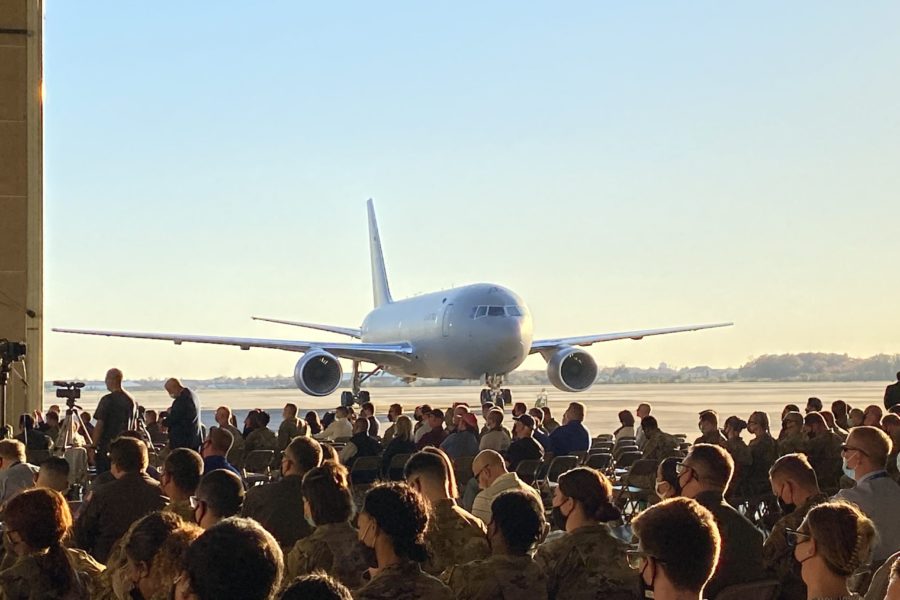JOINT BASE MCGUIRE-DIX-LAKEHURST, N.J.—The KC-46 Pegasus tankers here all fly with the callsign “Pudgy” in honor of the second-highest-scoring American ace of World War II, Thomas B. McGuire.
“Pudgy 01” and “Pudgy 02” arrived Nov. 9, 2021, as part of an elaborate welcoming ceremony. Pudgies 03 to 08 have arrived since.
The new aircraft aren’t named Pudgy. “That was just chosen to be the callsign to be best representative of the base,” said KC-46 pilot Capt. Luke A. Williams. “There was no name given to the aircraft besides” their given Air Force type nickname, Pegasus.
A replica of the original “Pudgy,” McGuire’s P-38 Lightning, is on display at the entrance to the McGuire section of the base.
McGuire’s Pudgy “is so emblematic of the base,” explained 305th Air Mobility Wing historian Stuart R. Lockhart. “It is a connection so well known” in the area and within the Air Force.

Lt. Col. Joe Delgado of the 514th Maintenance Group told Air Force Magazine that the joint base’s leaders came up with the callsign because it references the entire base, not just one wing.
“The commanders didn’t want to use ‘Can Do’ because that is a 305 AMW callsign,” Delgado said. Usually, when someone from the 514th Air Mobility Wing flies, “they simply adopt the squadron’s callsign,” he said.
Williams, the pilot, said “Can Do” would have left out the 514th Air Mobility Wing, which also flies the KC-46, and the 87th Air Base Wing, which hosts the wings.
“In the end, Pudgy is used to encompass everyone who does the mission of the base,” Delgado said. Each delivery flight will have the Pudgy callsign: “Pudgy 24” is to be delivered in 2023.
87th Air Base Wing historian James J. Warrick said McGuire named his airplane “Pudgy” after his wife, Marilynn. She had “obtained the nickname in high school,” according to information published by the base.
“He shipped off to the Pacific shortly after they were married and never returned home to her,” Warrick said in an email. “On 7 January 1945 over the Philippines, Major McGuire was killed during a dogfight performing a maneuver in an attempt to help a wingman,” Warrick said.
“His remains were hidden by locals and were not discovered until 4½ years later. He was posthumously awarded the Medal of Honor on 8 May 1946 with Charles Lindbergh attending,” Warrick added. “He was buried with full honors at Arlington in May 1950.”
But every month or so, a new Pudgy flies over the skies of New Jersey.


